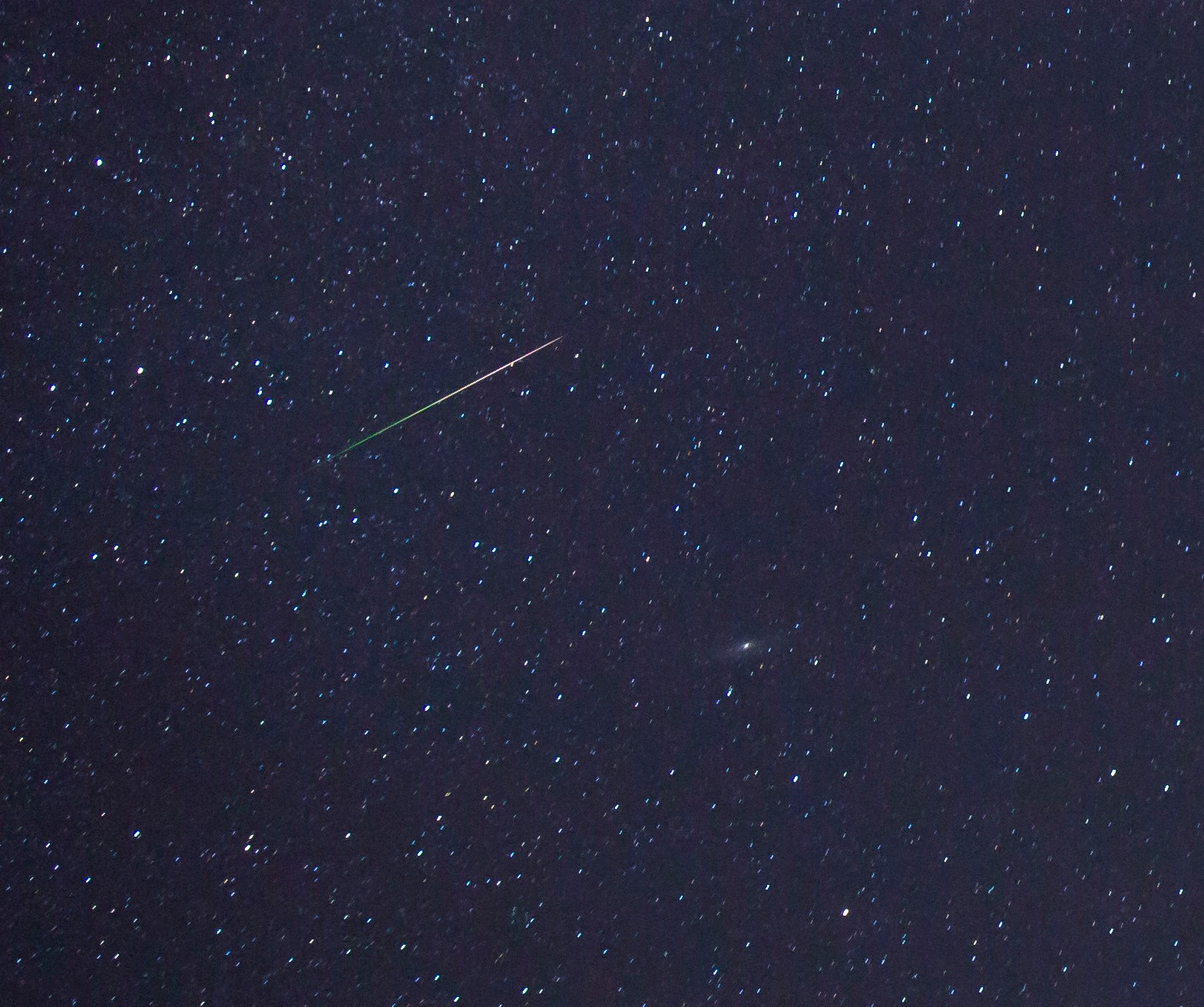Last night I took several hundred photos between 11:30 pm and 4 am trying to catch some Perseid meteors. I only got about 15 bright ones, so I’d say this was not a good year for the Perseids.
But almost every one started out with a blue-green trail as they burned up, for example this one near the Andromeda galaxy (the fuzzy area to the lower right, click image for full-size):

Perseid meteor near the Andromeda galaxy, August 13, 2015. Canon 6D with 16-35 f/4 lens wide open at 16mm, 30 sec exp, ISO800.
The blue-green color I’ve seen explained as copper or magnesium or iron or nickel, so I have no idea what to believe. Expert opinion welcome.

 Home/Blog
Home/Blog



